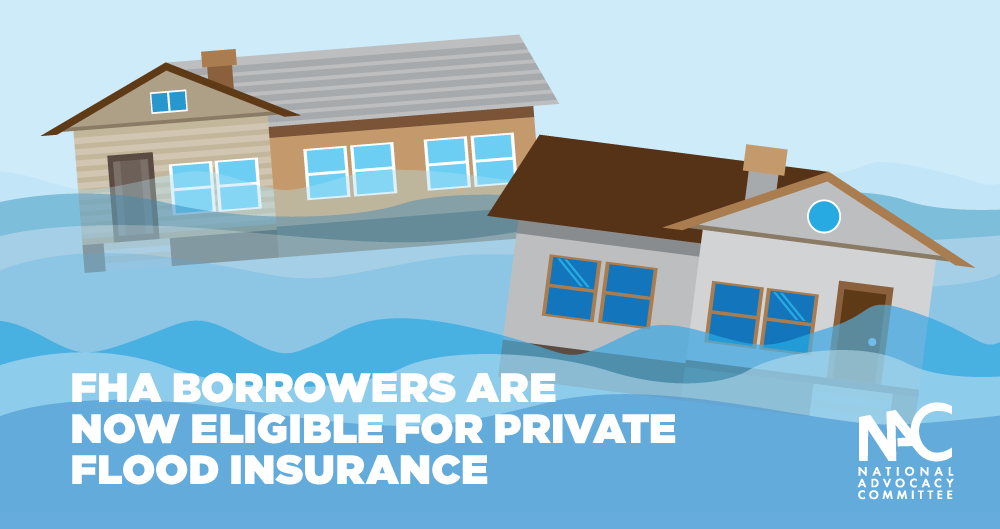FHA announces borrowers are now eligible for private flood insurance
Celebrating NAHREP familia, cultura, politics, and grassroots action
December, 2022

Last month, the U.S. Department of Housing and Urban Development (HUD), through the Federal Housing Administration (FHA), announced homeowners with FHA-insured mortgages are now eligible to purchase flood insurance on the private market. Previously, only flood insurance obtained through the National Flood Insurance Program (NFIP) was allowed, limiting choices for consumers. The rule change comes after years of advocacy on behalf of FHA borrowers, many of whom were required to purchase policies that were either more expensive or had less coverage than what they would have been able to obtain on the private market.
Flooding is the number one natural disaster in the country and is recognized as both the costliest and the most severe weather threat in the U.S. However, many properties are not adequately protected. In an audit released in March of this year, 31,500 FHA-insured loans that were serviced in 2020 did not maintain appropriate flood insurance coverage, exposing FHA and homeowners to increased risk. Allowing for more consumer choices encourages competitive pricing and expanded protection opportunities for homebuyers.
What else is there to know?
The rule change will go into effect on December 21, 2022. You can find the final rule and mortgagee letter here. Flood insurance is still required for homeowners in FEMA-designated Special Flood Hazard Areas and private flood insurance options must meet at least the same level of coverage provided by the NFIP. Homeowners without flood insurance are at risk of default, as major flood damage can be costly in repairs. Access to more affordable coverage options can go a long way in regard to homeownership affordability in certain areas.
The prior rule was put in place in 1968, when the private flood insurance market was not adequately able to supply coverage. However, conventional borrowers have been able to purchase private insurance options since 2019 and the private market today has more coverage options for consumers.
How did flood insurance get so complicated?
The NFIP program was created at a time before the sufficiency of private flood insurance markets. Flood insurance can be difficult to provide due to the frequency with which flooding occurs, especially in flood-prone areas, and the extent of the damage they cause. Some homes, due to their geographic location, get flooded repeatedly. A very small percentage of homes have received about a quarter of NFIP claims. A major benefit to a federal program is that people living in these homes are guaranteed access to coverage that a private market traditionally wouldn’t provide. However, this coverage can be expensive and not all homes in these communities have the same protection needs.
What does this mean for Latino homebuyers?
Considering that Latinos disproportionately take advantage of FHA financing, this is a big win for Latino homebuyers. Latinos are also more likely to live in high-risk flood zones – particularly in hurricane-prone regions such as Texas, Florida, and Puerto Rico. But flood risk is not isolated to these areas. Research shows that Latinos are also more vulnerable to flooding in other states, such as Washington and California. With borrowers already facing affordability challenges in today’s market, having more insurance options to provide better coverage at a lower cost will go a long way for many Latino families.
Join the NAC Blog Mailing List
SubscribeAbout NAHREP’s National Advocacy Committee
The National Association of Hispanic Real Estate Professionals® (NAHREP®) advocates on behalf of its network of 50,000 real estate professionals and Hispanic homeowners nationwide. NAHREP focuses on national and state legislative issues that are critical to its mission: to advance sustainable Hispanic homeownership.
NAHREP firmly believes every individual who desires to become a homeowner and can sustain a mortgage should be granted access to a piece of the American Dream. To that end, we are focused on three main priorities: Housing Inventory, Access to Credit, and Immigration. Visit our website to read more about NAHREP’s policy priorities and to get involved.



